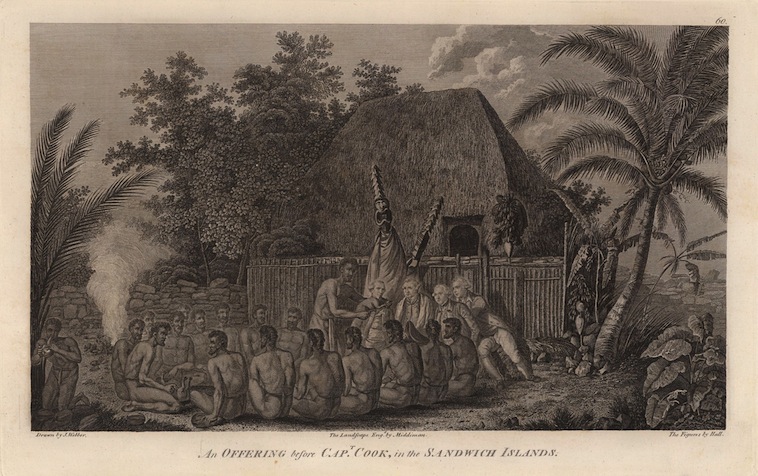Isaak Iselin in Hawaiʻi, 1807
 Early contact during one of James Cook's visits to Hawaiʻi. This stereotypical image was known by Isaak Iselin prior to his visit to the islands, and may have framed his expectations of what he would himself encounter.
Early contact during one of James Cook's visits to Hawaiʻi. This stereotypical image was known by Isaak Iselin prior to his visit to the islands, and may have framed his expectations of what he would himself encounter.
Picture drawn by John Webber, in: Cook, James and King, James. A Voyage to the Pacific Ocean, undertaken by command of his Majesty, (etc.). London: Printed for John Stockdale, (etc.), 1785.
Through Hawaiian Eyes II
At the time of Isaak Iselin's visit, the Hawaiian archipelago was a polity with a differentiated hierarchy and complex societal patterns. Early visitors, including Isaak Iselin, accepted this hierarchy, interacted within its boundaries and did not contest it in their writings. This was of course advisable, considering the harsh punishments meted out to those who disrespected the rules. But this acceptance, at least in Iselin's diary, is nevertheless surprising in view of EuroAmerican disparagement of peoples all over the world as «primitives».
The contact zone in which Isaak Iselin found himself was complex and often difficult to grasp for the people involved. Misunderstandings could lead to dangerous situations for both sides. Nevertheless, interactions proceeded along a set of patterns, ranging from the gift–giving of a high ranking aliʻi, to negotiations for sex between seamen and Hawaiian women. Mutual understanding was a challenge. The lingua franca was generally a simple English learned by some of the aliʻi. At times there was a translator in the person of one of the few EuroAmericans living on the islands, the so–called beachcombers – although it is questionable how much they understood of the nuances of what they were «translating».
This exercise focuses on contact situations between the crew of the Maryland and members of the aliʻi, as analysed through Iselin's account.
